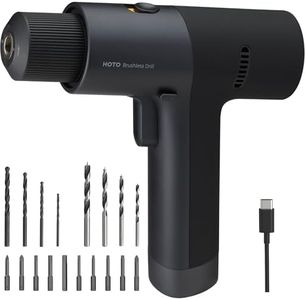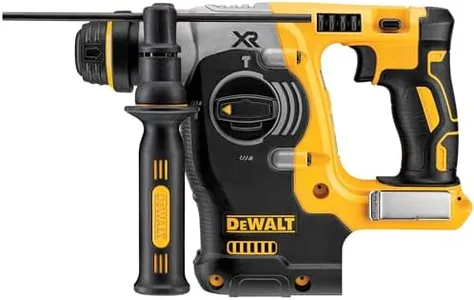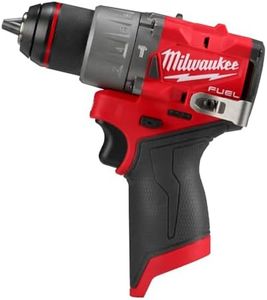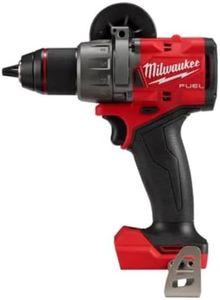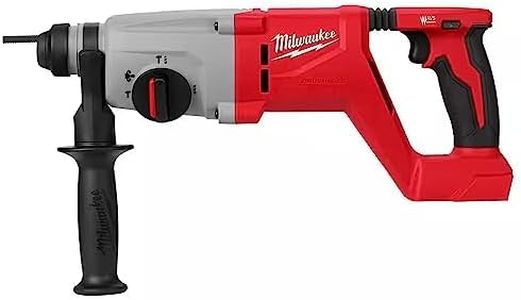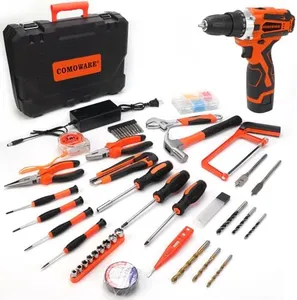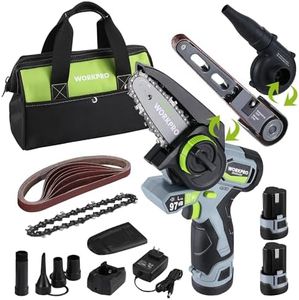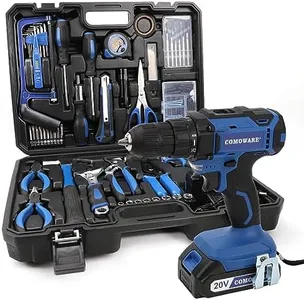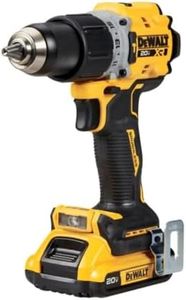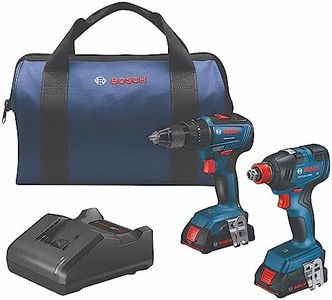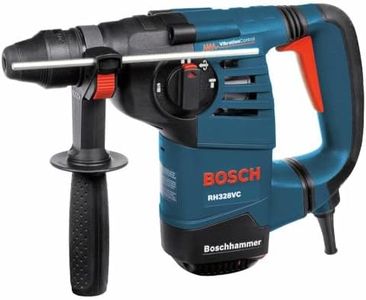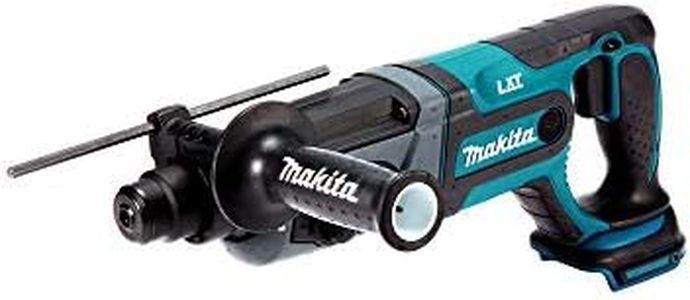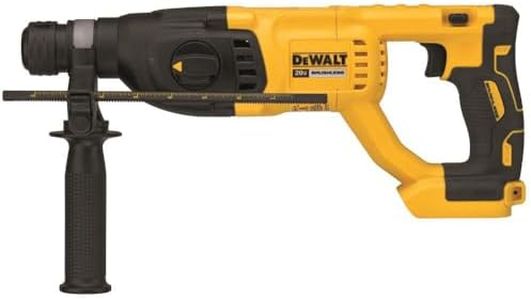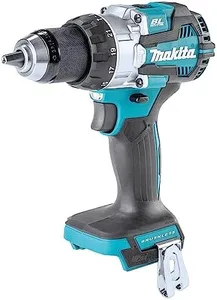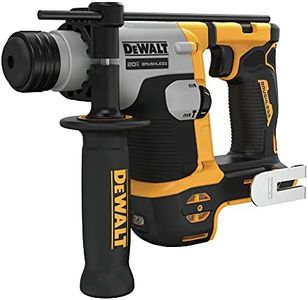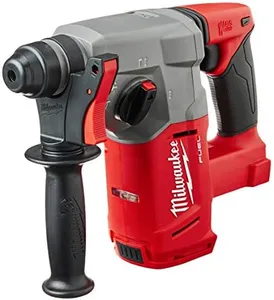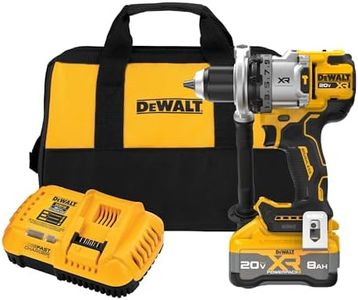10 Best Cordless Hammer Drills 2025 in the United States
Our technology thoroughly searches through the online shopping world, reviewing hundreds of sites. We then process and analyze this information, updating in real-time to bring you the latest top-rated products. This way, you always get the best and most current options available.

Our Top Picks
Winner
DEWALT 20V MAX Hammer Drill and Impact Driver, Cordless Power Tool Combo Kit with 2 Batteries and Charger (DCK299M2)
Most important from
7438 reviews
The DEWALT 20V MAX Hammer Drill and Impact Driver Combo Kit (DCK299M2) is a strong contender for those needing a reliable and powerful cordless hammer drill. The combo kit includes two tools: the DCD996 hammer drill and the DCF887 impact driver, both powered by 20V MAX lithium-ion batteries. The hammer drill boasts a high performance with a 3-speed all-metal transmission and can achieve up to 2,000 RPM and 38,250 BPM, making it suitable for fast drilling in masonry materials.
Its compact size and lightweight design (4.7 lbs) make it easy to handle in tight spaces, and the built-in LED light is 20 times brighter than previous models, which is useful for working in dark areas. Additionally, the hammer drill includes three-speed settings and a 1/2-inch chuck size, enhancing its versatility for different tasks. The impact driver, on the other hand, delivers a maximum torque of 1,825 in-lbs, with a fast speed of up to 3,250 RPM and 3,600 impacts per minute. It's also compact (5.3 inches front-to-back) and lightweight (3.4 lbs), allowing for ease of use in confined areas.
The kit comes with two 4.0Ah batteries, a charger, belt hooks, a 360° side handle, and a contractor bag, providing everything you need for extended use and portability. However, the combined weight of the tools (11 pounds) might be heavy for some users, and the higher price point may be a consideration for those on a budget. Despite these minor drawbacks, the DEWALT 20V MAX combo kit offers a 3-year limited warranty, making it a solid choice for both occasional DIYers and professional tradespeople who need dependable cordless power tools.
Most important from
7438 reviews
DEWALT 20V MAX SDS Rotary Hammer Drill, Cordless, 3 Application Modes, Bare Tool Only (DCH273B)
Most important from
3203 reviews
The DEWALT 20V MAX SDS Rotary Hammer Drill is a solid choice for anyone looking for a reliable cordless hammer drill, particularly in concrete drilling tasks. Its 2.1 Joules of impact energy ensures quick drilling through concrete and other tough materials, making it suitable for heavy-duty applications. One of its standout features is the SHOCKS ACTIVE VIBRATION CONTROL system, which significantly minimizes user discomfort from vibrations, a common drawback in many power tools. This makes it more user-friendly for extended work sessions.
Weighing in at just 6.4 pounds, this drill is lightweight, which is a plus for tasks such as rod hanging and mounting. Its brushless motor not only enhances performance but also improves runtime, meaning you can work longer without interruptions, especially since it’s battery-operated. The three application modes (Drill, Hammer Drill, and Chip) offer flexibility for various tasks, allowing users to switch easily as needed.
However, as a bare tool, the drill does not come with a battery or charger, which could be an additional expense if you’re starting from scratch. Also, while the maximum chuck size of 20 millimeters is sufficient for most tasks, it may limit you if you plan to tackle larger projects that require bigger bits. In terms of ergonomics, the lightweight design is a real advantage, but some users may still prefer additional grip or padding for comfort during prolonged use. Additionally, it requires an extra extraction tool to comply with OSHA Table 1, which could further increase costs for users concerned about safety regulations.
Most important from
3203 reviews
Milwaukee 3404-20 12V Fuel Cordless 1/2" Hammer Drill/Driver (Bare Tool)
Most important from
1155 reviews
The Milwaukee 3404-20 12V Fuel Cordless Hammer Drill/Driver is a versatile tool suitable for various drilling and driving tasks. Its brushless motor offers efficient performance, and at only 2.18 pounds, it is lightweight, which makes it easier to handle and reduces fatigue during prolonged use. The 1/2" all-metal chuck enhances durability and bit retention, while the mechanical clutch provides consistent results when driving different fasteners.
With a maximum rotational speed of 1500 RPM, the drill is capable of handling many applications efficiently. However, it is worth noting that it is sold as a bare tool, meaning batteries are not included and must be purchased separately. Additionally, while the tool is compact and portable, the 12V battery voltage might not be as powerful as some higher voltage models, which could limit its suitability for more demanding tasks.
Despite these considerations, the Milwaukee 3404-20 is a solid choice for anyone needing a reliable and portable hammer drill for everyday use, especially in tight spaces where heavier tools might be unwieldy.
Most important from
1155 reviews
Buying Guide for the Best Cordless Hammer Drills
Choosing the right cordless hammer drill can make a significant difference in the efficiency and ease of your drilling tasks. Whether you're a professional contractor or a DIY enthusiast, understanding the key specifications of cordless hammer drills will help you select the best tool for your needs. Here are the main specs to consider and how to navigate them.FAQ
Most Popular Categories Right Now
